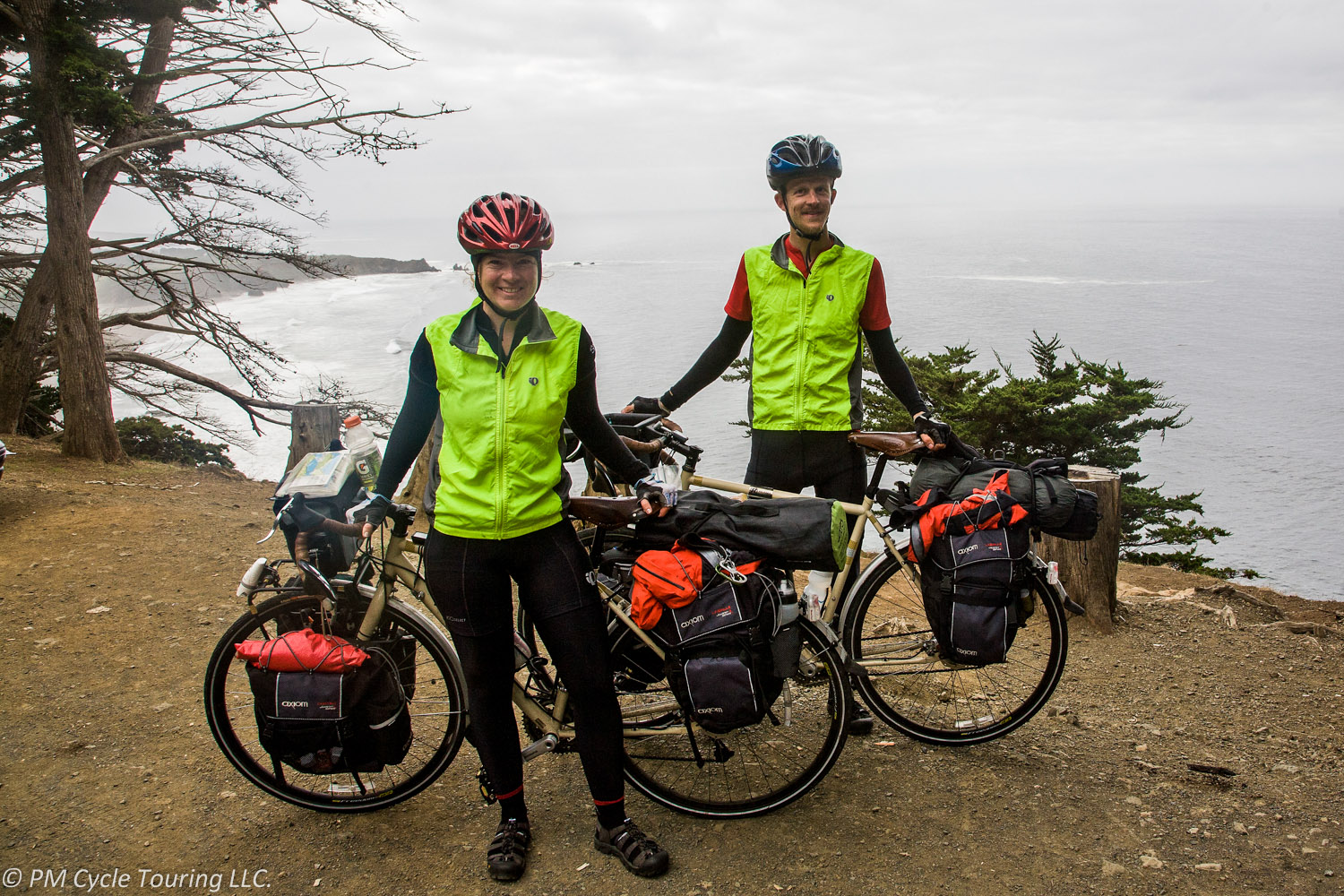What should you wear on your tour? I know that when I started thinking about touring, this was a big concern. I didn’t know how much or what kind of clothing to pack. After experimenting a little bit, here’s what I’ve found that works for me.
Shorts. If you’re new to bicycling, you’ve most likely noticed that cyclists generally wear close-fitting, spandex, padded shorts. Why is this? Well, I’ve got one word for you: chafing. When I started riding, I was too embarrassed to wear cycling shorts, and I wound up with painful, raw patches of skin. It was terrible! So, I bit the bullet and bought a pair of women’s specific bicycling shorts and let me tell you! No more rubbing. And the padded butt, well, let’s just say that it made a huge difference. If you’re planning on riding for many hours a day, many days in a row (aka, a bicycle tour) you’ll need to be comfortable and you need to take care of your skin. Bicycling shorts (and pants) are essential for long distance comfort and after several days on the road you don’t care what anyone thinks about how you look. (Also think about getting a chamois cream or stick to help minimize friction. We recommend Bodyglide Original Anti-Chafe Balm.)
Shirts. If you go into a shop that sells bicycling clothing, you’ll see many different types of jerseys. The two most popular material choices are polyester/lycra blends and wool. In my experience, wool jerseys are the way to go. I’ll tell you why: smell. Polyester (like most man-made fibers) tends absorb and retain your body odor after just a short time. Even after washing it has a funky smell*. On the other hand, you can wear a wool jersey for a few days before it starts to hold onto body odor. It dries quickly, is super durable, and feels great on. I like to take two short-sleeved jerseys and one long-sleeved.
Armwarmers and Legwarmers. One of the amazing things about being on a bicycle all day is the immense range of temperatures you cycle into. It can be literally freezing in the morning when you wake up and sweltering by noon. I prefer shorts to leggings and wear leg warmers in the morning, and remove the leg warmers as it gets warmer. Same with arm warmers. Another advantage of layering up is the fact that your body will warm up as you exert yourself. If you start out with a big climb first thing in the morning, chances are you’ll be wanting to shed a few layers before you reach the top.
Rain gear. Unless you are cycling through Death Valley, you will probably get rained on at some point during your tour. This is a cause of great concern to new cyclists, but very quickly you realize that it is not a big deal. While good waterproof gear will help keep you dry on the outside, even the most expensive gear won’t keep you from sweating on the inside. Realistically the main purpose of rain gear is to keep you from getting too cold and to block the wind. If you are riding through warm rain, it oftentimes is easiest to just ride in it and enjoy it; you will dry off shortly after it passes. Windproof/waterproof gloves are a must if you are riding in cooler temps. Also, a good rain jacket will be one of your most valuable tools. It should have many zippers for venting and if it is truly made for cycling will have a long tail to keep your back dry as you lean over pedaling. Most importantly it will block the wind which does wonders for making cycling more bearable.
“Camp” clothes. After a long day on the bike, there’s nothing better than showering and changing into regular clothing. We typically bring one extra set of clothing with us on tour. This includes a pair of long pants and a long sleeve merino wool shirt. I also bring at least 2 pairs (one to wash, one to wear) of travel underwear (like Exofficio), and one normal bra (I bring two sports bras for riding). For cool evenings we like to bring lightweight down vests that double as a pillow cover for Matt, and use our rain jackets as windbreakers around camp. Other must haves include a beanie and a lightweight pair of shoes, in case we want to go for a walk in the evening or explore town on a rest day.
Clothing on a bicycle tour is about balancing comfort and weight. Using clothing that has multiple uses will cut down on the weight of the clothing that you have to carry. Careful planning will see you out there as comfortable as possible, ready for any weather situation.
One last hint: Got some funky smelling clothing? Try Nathan Penguin Sport wash. A small capful and your clothes come out clean and smelling fresher than other detergents.
Wondering what a packing list for a bicycle tour might look like? Check out this post with a rundown from our latest tour.
Disclaimer:
All opinions about any products mentioned in this article are my own. I have not been compensated in any way by anyone. I will, however, receive a small commission if you choose to purchase the item from Amazon after clicking the link I provide. Use your own discretion.
